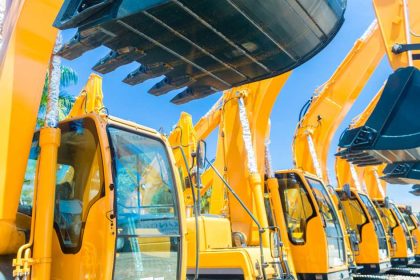Green shoots are sprouting from the country’s dense concrete jungles as inner-city councils attempt to improve the quality of life for everyday Aussies.
For the almost 19 million Australians living in major cities, large outdoor green spaces have become a rare find amongst the city skyline as developers scope up any and all available land for commercial and residential developments.
But with the lockdowns during the pandemic shining a light on the importance outdoor recreation plays in boosting overall wellbeing for inner-city Aussies, councils are now beginning to earmark lots in land-poor areas for small green developments known as ‘pocket parks’.
True to their name, these small parks are a fraction of the size of their larger counterparts – clocking in at less than 5,000 square metres – but boast many of the same features like seating, plants and shade for passers-by to relax in.
But don’t let their small size fool you. According to Dr Mike Harris from UNSW’s School of Built Environment, pocket parks are more than just a greenery gimmick.
“One of the issues from an urban liveability perspective is that with increasing population density, we need more public space,” said Dr Harris.
“These pocket parks are a terrific opportunity to answer that problem and to provide public space for the local community where previously there may not have been any.”
A 2021 literature review published in Urban Forestry & Urban Greening on the effectiveness of pocket parks found that the little green spaces had a big impact on improving mental wellbeing, physical health, and helping communities socialise.
The report’s authors, Praveena Balai Kerishnan and Sreetheran Maruthaveeran, noted that natural features like green ground cover, trees, bushes, flower beds, water features, and a calm atmosphere away from traffic in particular were strongly linked with better mental health for residents.
Making public space more accessible
Unlike a single large-scale city park, pocket parks can also be plotted strategically within a neighbourhood to help boost accessibility and usage of public spaces in specific regions.
In Sydney, these small spots of mother nature have already sprouted within the inner west and eastern suburbs where smaller public spaces weren’t previously included in the original planning regulations.
“The city has big public gestures like Centennial Park, but it wasn’t master planned to have many smaller parks in its subdivisions,” said Ela Glogowska, architect and PhD candidate at the School of Built Environment.
“So, it’s no surprise that today we have a massive deficit of accessible public socialising areas.
“Having more open and accessible public spaces for residents plays an essential role in building a sense of community. These are the places where people bond, interact and enjoy life, which is why we want to live in cities in the first place.”
Dr Harris said that pocket parks offer urban environments a greenery boost by introducing more plant life and tree cover, which may be difficult to find in urban areas.
“Our urban areas are getting hotter, and we know one of the ways we can mitigate against that is through trees that have a cooling effect,” Dr Harris says.
“Pocket parks can help us find additional space to develop and expand the canopy cover for our cities.”
The parks themselves can also be built to meet the needs of the local community. A pocket park for a town centre could look completely different from a park in a residential area with playgrounds for children.
“They’re a fantastic opportunity for council to deliver a community asset, cost-effectively and with minimal disruption, and listen and respond to the needs of the local population through design,” Dr Harris says.
“If we want to start to improve the quality of our public domain, anything we can do to prioritise people more helps to do that.”
Ms Glogowska said that while pocket parks alone won’t solve the liveability problem arising in Aussie cities, more natural space for the community is always beneficial.
“We must consider public spaces as social infrastructure and value them in terms of their wellbeing benefits,” she said.
“If we want a healthy and happy society, we need a diversity of quality public spaces for the public to enjoy, and more pocket parks will certainly contribute to that.”







